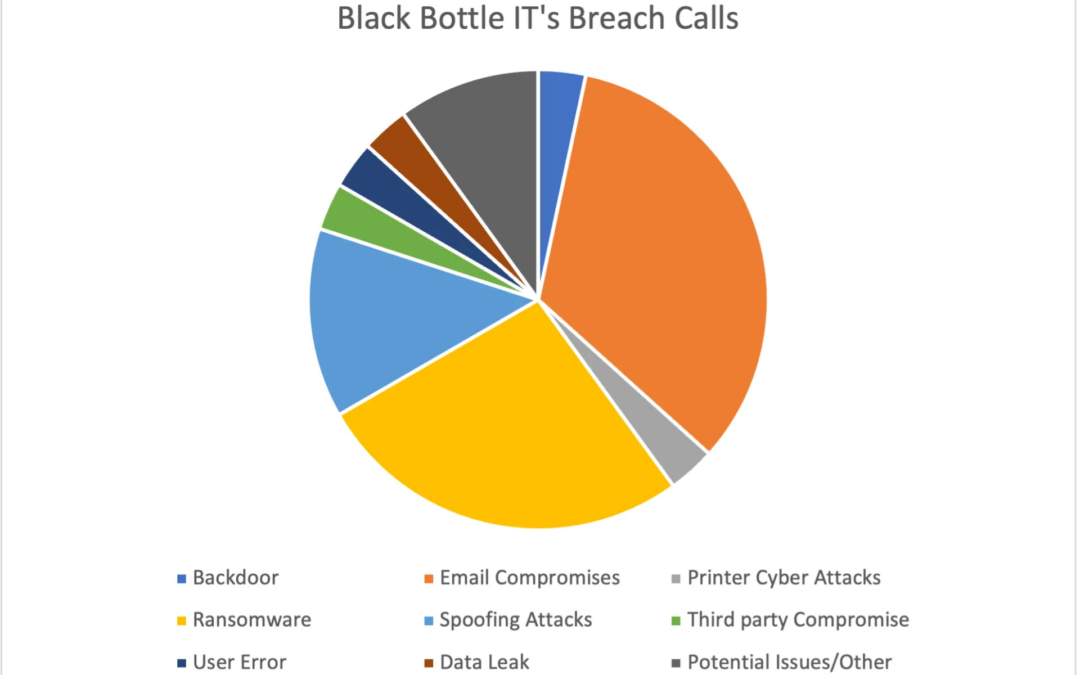
Cybersecurity, in General, Doesn’t Have to Be Hard.
Don’t Sweat it.
Less than 1% of manufacturers will require CMMC Level 3
It may be one of your largest accounts if you’re a manufacturer with a contract with the Department of Defense (DoD). Winning DoD contracts can contribute to years of work and good cash flow. It isn’t nearly as easy for many contractors as it used to be to win those contracts, and in fact, it will get more complex.
Once CMMC 2.0 arrives – the rule-making of the Cybersecurity Maturity Model Certification (CMMC) if you have contracts, will you keep them? Don’t sweat the big stuff. Your organization will most likely fall under CMMC 1 and CMMC 2 levels, considering the projection for 99.9%* of all DoD contractors.
- Level 1: 59.9% (77,789 companies)
- Level 2: 40.0% (51,860 companies)
- Level 3: 0.1% (160 companies)
These regulatory requirements aren’t moving as fast as everyone thought. Still nervous about meeting these compliances? Black Bottle IT recommends protecting your business without a big pot of gold! Our affordable solution gets you to NIST 800-171 compliance.
Cybersecurity, in General, Doesn’t Have to Be Hard.
Whether you have DoD contracts or not, improving your cyber posture will go a long way to building trust and keeping your business safe. Manufacturers, education, nonprofits, and legacy systems, typically lack staff IT teams and utilize legacy systems.
Once ransomware attackers lose interest in what’s happening in Russia and Ukraine, the industries most vulnerable will need, and should always have, proper controls in place.
It doesn’t have to be hard to get started with better cybersecurity practices.
Here are the top four weaknesses organizations are facing as they LACK:
- Vulnerability Scans: Scanning systems are advised to ensure security from all known vulnerabilities. One of the most significant security vulnerabilities of the last few years, Log4j, is prevalent in many technology applications. Vulnerability scanning will identify this and many other vulnerabilities so that a remediation plan can be developed and executed.
- Security Monitoring Tools: If your network is breached, having intrusion detection/response will alert key personnel and potentially stop the attack.
- Data Backup Strategy: The best practice is to have an offsite backup solution.
- Security Awareness Training: Human error is the most significant attack vector; regular employee training introduces/re-enforces good security hygiene and habits.
Chose to Partner with Black Bottle IT.
We are certified trusted, and we will take steps to achieve compliance and protect your organization from threats like ransomware and data breaches.




